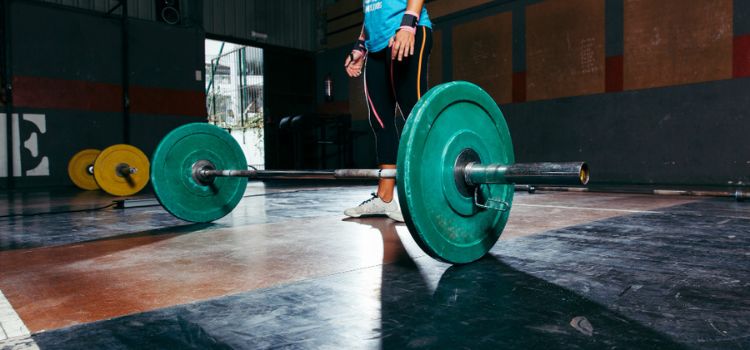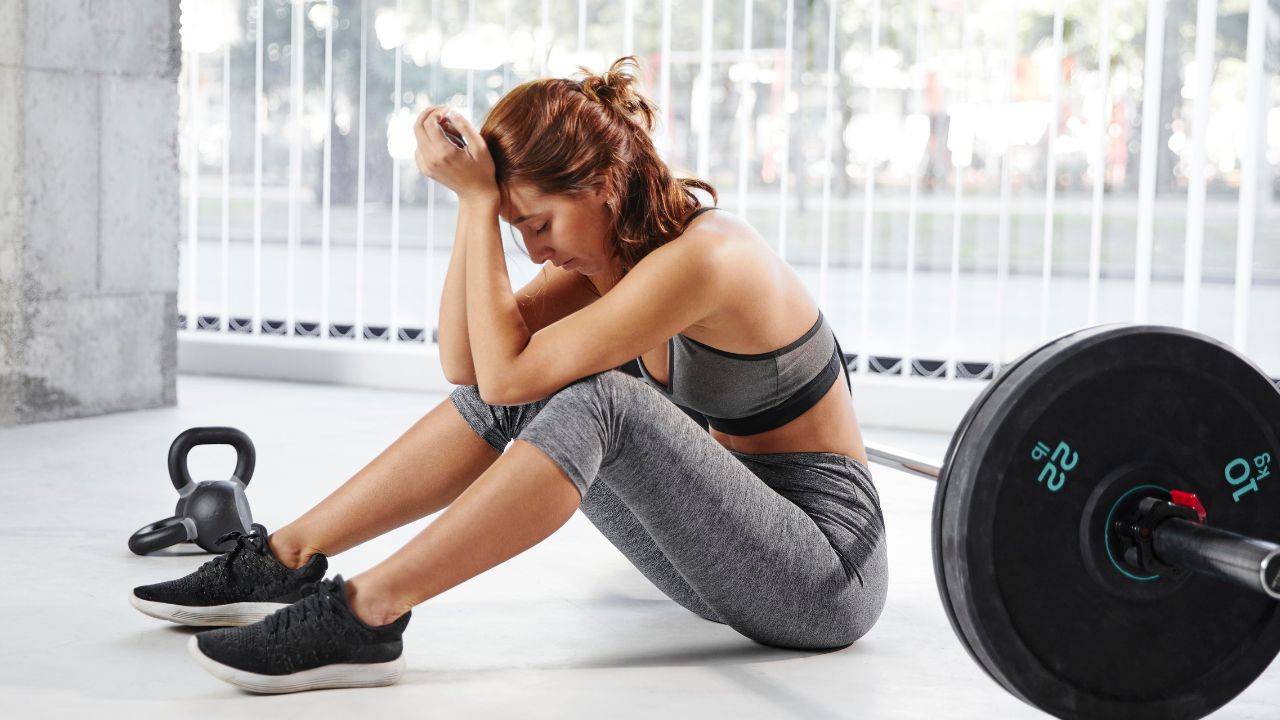Welcome to our comprehensive guide on calculating weight on the Smith machine! Whether you’re a beginner or an experienced lifter, determining the appropriate weight for your workouts is crucial to achieving your fitness goals. In this blog post, we will walk you through the step-by-step process of calculating the weight on a Smith machine, providing you with the knowledge and confidence to optimize your strength training routine.
Understanding the Smith Machine
Before we delve into calculating weight on the Smith machine, let’s take a moment to familiarize ourselves with this popular gym equipment. The Smith machine has a vertical barbell fixed within steel rails, allowing for controlled movements during squats, bench presses, and shoulder presses. Its design offers stability and safety, making it an excellent choice for individuals of all fitness levels.
Determining Your One Rep Max (1RM)

To accurately calculate the weight you should be using on the Smith machine, it’s essential to establish your one rep max (1RM) first. Your 1RM represents the maximum weight you can lift for a single repetition in a given exercise. While it may seem intimidating, determining your 1RM is valuable for setting training intensities.
To calculate your 1RM, follow these steps:
- Choose an exercise: Select the specific exercise you want to calculate your 1RM for, such as the squat, bench press, or shoulder press.
- Warm-up properly: It’s crucial to warm up your muscles and joints before attempting a heavy lift. Perform dynamic stretches and gradually increase the weight to prepare your body for the upcoming challenge.
- Start with a comfortable weight: Begin with a weight you can comfortably lift for 8-10 repetitions. This weight will serve as your starting point for calculating your 1RM.
- Increase the weight gradually: Add weight to the barbell in small increments, ensuring proper form and technique with each repetition. Keep increasing the weight until you reach a point where you can only perform one repetition with good form.
- Rest between attempts: Allow sufficient rest between each attempt to recover fully and maintain proper technique.
- Record your successful lift: Note once you’ve reached your maximum weight for a single repetition. This weight will serve as your 1RM for the chosen exercise.
Calculating your 1RM provides a baseline for determining the weight you should use on the Smith machine. However, remember that your 1RM may vary for different exercises and over time as you progress in your training journey.
Understanding Percentage-Based Training

Once you have established your 1RM, it’s time to delve into percentage-based training. This training approach involves working with a certain percentage of your 1RM, allowing for systematic progression and optimal training stimulus. By manipulating the weight based on percentages, you can customize your workouts to suit your goals and abilities.
To calculate the weight for a specific exercise using percentage-based training, follow these steps:
- Determine the desired intensity: You may want to work at different intensities depending on your training goals. Common percentages used in percentage-based training include 70%, 80%, and 90% of your 1RM.
- Apply the percentage to your 1RM: Multiply your 1RM by the desired intensity percentage. For example, if your 1RM for the bench press is 200 pounds and you want to work at 80% intensity, the calculation would be 200 pounds x 0.8 = 160 pounds.
- Round to the nearest weight increment: Most gyms have barbells with fixed weight increments. Round the calculated weight to the nearest available increment on the Smith machine. For instance, if the Smith machine barbell increases in increments of 5 pounds, your rounded weight would be 160 pounds.
By utilizing percentage-based training, you can ensure that each workout is appropriately challenging and tailored to your needs. This method allows for progressive overload, essential for continuous strength gains.
Adjusting for Mechanism Differences

When you are dealing with a Smith machine, you will know the weight of the barbell in your hand because the weight is displayed in increments on the barbell. A Smith machine consists of a barbell, footplates, a safety harness, and sometimes an angled bench. A Smith machine has been used as a weight-training tool for many years. It has long since it first appeared in a gym in the 1920s.
Although it is a very popular barbell machine, there are different types of machines. The Smith machine is one of them. Many must realize that the Smith machine does not follow the same guidelines as a traditional barbell. When you use a Smith machine, you must perform each exercise in a specific manner. The Smith machine doesn’t move during a workout. You will be working out on a fixed machine, and the machine will have a predetermined amount of resistance. You will have to adjust the amount of weights you use to adjust the weight.
The Smith machine provides an accurate measure of the resistance provided to you during each exercise. You won’t change the weight or add additional weights to the bar. All you have to do is multiply the weight already there by a given number. For example, if you use a standard Smith machine, you must multiply the weight already there by 0.8.
This is what you will need to do for all of the exercises that you perform. You must ensure you are using the correct weight for each exercise. If you don’t, you may injure yourself. You also have to ensure you are using the correct amount of resistance. You cannot work out if you have a lighter weight than the one specified on the machine.
This is why you must be careful when using a Smith machine. You will need to be able to do the exercises correctly, and you will need to use the right weight. You may need clarification about how the Smith machine works. Here is a short explanation.
Listening to Your Body
How to calculate weight on smith machine? If you want to know how the Smith machine works, you can look at the Smith machine’s manual. This will tell you how it works. It has two handles that can be used for lifting and lowering weights. It has a frame, a platform, and a barbell. The barbell is attached to the frame. The handle can be raised or lowered with a pulley system. This system allows the handle to raise or lower the barbell with a certain amount of resistance.
How to calculate weight on smith machine? Tracking Your Progress
You may wonder why you should use the Smith machine to track your progress. The main reason is that it can help you to measure how much weight you have lifted. You can lift the barbell and see how much weight you can lift. You can also record this information. This will help you to understand how much weight you have lifted and how much you have progressed.
How to calculate weight on smith machine? Your progress will also be reflected in the number of sets you completed. For example, when you start with the Smith machine, you can tell you have yet to lift any weight. You would have done some pushups. However, after a few weeks of using the Smith machine, you can notice that you can lift more weight. You can also complete more sets with the Smith machine. This will show that you are progressing.
Seeking Professional Guidance
If you’re new to strength training or unsure about calculating weight on the Smith machine, seeking guidance from a qualified fitness professional may be beneficial. A personal trainer or strength coach can assess your needs, provide personalized recommendations, and ensure you’re using the Smith machine correctly.
Professional guidance can help you optimize your training program, minimize the risk of injury, and accelerate your progress toward your fitness goals. Contact an expert if you feel uncertain or need support in your strength training journey.
Safety Considerations

Calculating weight on the Smith machine is about determining the appropriate load and prioritizing safety. Here are a few safety considerations to keep in mind:
- Warm-up adequately: Properly warm up your muscles and joints before attempting heavy lifts to reduce the risk of injury.
- Use proper form and technique: Focus on maintaining proper form throughout each exercise, paying close attention to your posture, joint alignment, and range of motion.
- Start with lighter weights: If you’re new to strength training or unfamiliar with the Smith machine, start with lighter weights to familiarize yourself with the equipment and movements.
- Gradually increase the weight: Progressively increase as you become more comfortable and confident with the exercises, ensuring that your muscles and connective tissues can adapt to the added load.
- Listen to your body: Pay attention to any pain or discomfort during your workouts. If something doesn’t feel right, stop the exercise and seek guidance from a professional.
How to calculate weight on smith machine? Remember, safety should always be your top priority when using the Smith machine or gym equipment.
Conclusion
Congratulations! You’ve now mastered the art of calculating weight on the Smith machine. By understanding your 1RM, utilizing percentage-based training, adjusting for mechanical differences, and listening to your body, you can optimize your strength training routine and achieve your fitness goals effectively.
Remember, calculating weight on the Smith machine is not an exact science, and it may require some trial and error to find the perfect weight for each exercise.How to calculate weight on smith machine? Be patient, stay consistent, and trust the process. Your dedication and hard work will undoubtedly lead to progress and success in your fitness journey.
Now, it’s time to hit the gym, load up that Smith machine, and take your training to new heights!
You May Also Like:




